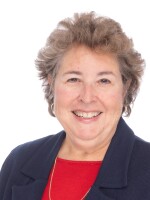Four engineers from Virginia Tech have beat 72 other teams to win a place in the federal government’s Wave Energy competition. Eric Paterson , George Hagerman, Mike Philen and HengXiao now have the chance to win $2 million to build their design which would turn wave power into electricity.
Another Virginia team chose not to enter the contest. Instead, they’re hoping to leapfrog the competition by installing a successful commercial wave farm in Europe.
Sandy Riesky and Matt Hantzmon are a couple of entrepreneurs from Charlottesville who found a promising wave power technology in Oregon about 15 years ago. They licensed it, hired a group of west coast engineers, and began making modifications, but their company, Columbia Power Technologies, didn’t spend a fortune building one prototype after the next for tests in the ocean. Instead, CEO ReenstLesemann says they took advantage of new computer modeling technologies.
“Our view is that it’s better to fail quickly and to fail on paper so to speak or in a computer model rather than going through the time and expense to build a prototype, go out and test it, and then see that you’ve got a failure.”
Once they had a success on paper, they proceeded to test their prototype for a full year in Puget Sound.
“And that’s one of the longest sea trials of anybody on record in the industry worldwide.”
They used a simple mooring technology, and designed their device, called the StingRAY, to withstand storms that occur every 50-100 years.
The StingRAY is different from other floating wave devices. It looks like a giant yellow step ladder, and it’s made of fiberglass instead of steel.
“If you look at the coast guard, when they have a buoy out in the water, every three or four years that buoy has to come in to be stripped and repainted and reconditioned, and that’s really expensive when you talk about a large piece of equipment or a whole farm of wave energy devices.”
Each StingRAY will weigh a thousand tons, Lesemann says it will be fairly cheap and easy to install them.
“We’re designing them so that they can be towed and deployed very quickly and recovered very quickly, but it’s a large piece of equipment. To make utility scale electricity, it’s not something you can do with a smaller device.”
And so far, he notes, investors are on board – among them, the U.S. Department of Energy and the Navy.
“We’ve one 8 competitive grants since 2008 to develop and test the system.”
In January, they’ll begin the last round of testing off a military base in Hawaii. If all goes well, Lesemann says that state could be an early adopter of wave power.
“Hawaii is still 70% diesel. It’s really hard to believe, but they’re still burning that much diesel, but they are. Southeast Alaska is very similar. Those communities are spending 50-60 cents per kilowatt hour for electricity, which is four to five times what we pay here on the east coast.”
But the bigger opportunity is in Europe, where prices for power are high and governments are anxious to be energy independent.
“It’s got to be a very scary place to wake up depending on Russian natural gas every morning. They have made the conscious decision throughout most of Europe to move away from nuclear energy, and so that leaves a gap.”
Columbia is already talking with European utilities, and if they should sign on, the cost of this technology will likely come down.
“We’ve seen the cost of energy for wind and solar really fall through the floor in the last five years, and that is really because of economies of scale and production volumes.”
When that happens, Lesemann says wave technology could finally be right for Virginia, and if climate change is as dangerous as scientists say it will be, Neil Kermode at the European Marine Energy Center, says we may all be turning sooner to the sea for salvation.
“We are pressing on very hard, because we absolutely know there is energy in the water out there, and we know we’re going to need this stuff. When will it happen? I just don’t know, but the thing is, we have done that piece of alchemy – of turning sea water into electricity. We can make this work.”
Sandy Hausman reported from Europe with the support of an Energy and Climate Media Fellowship from the Heinrich Böll Foundation.






